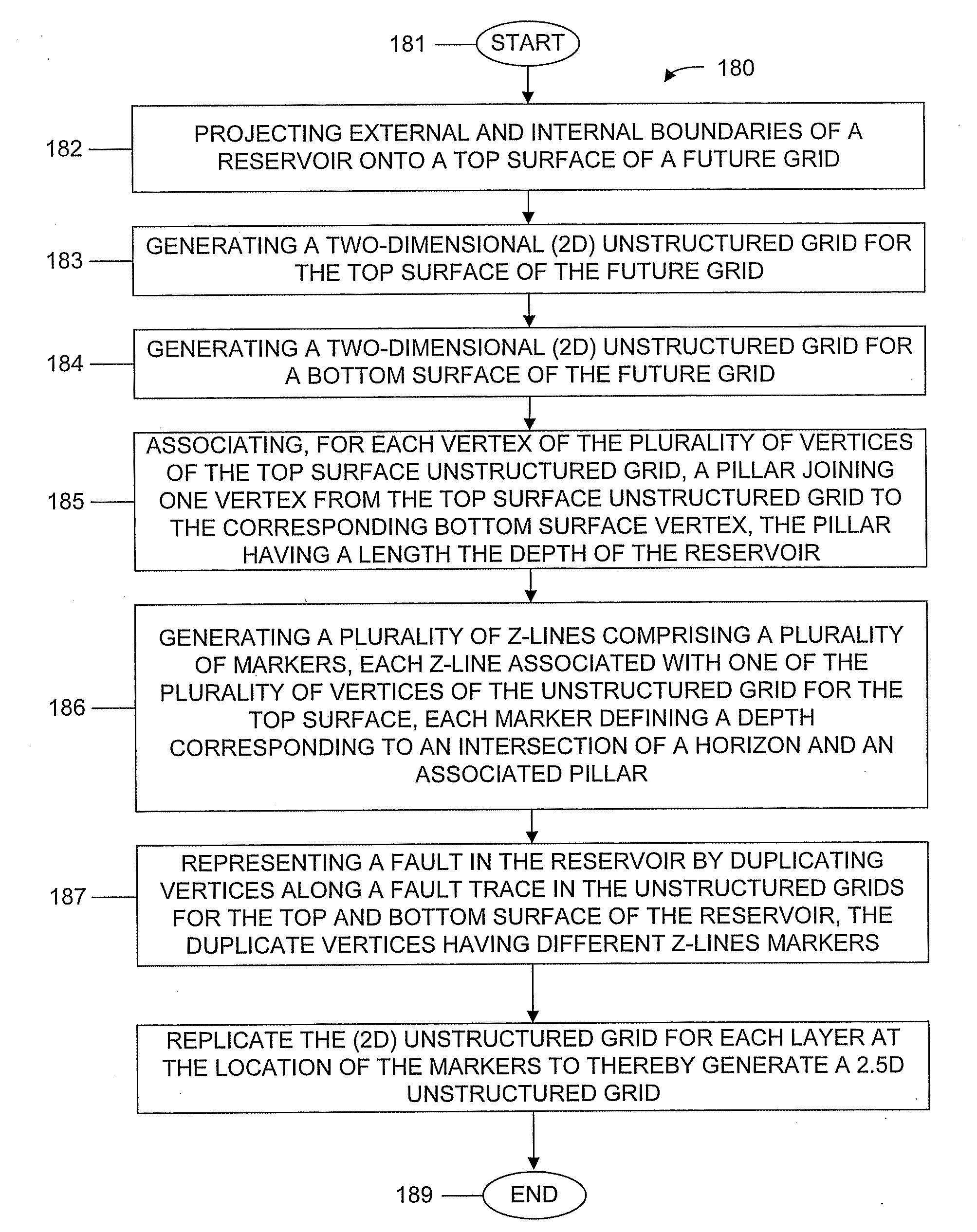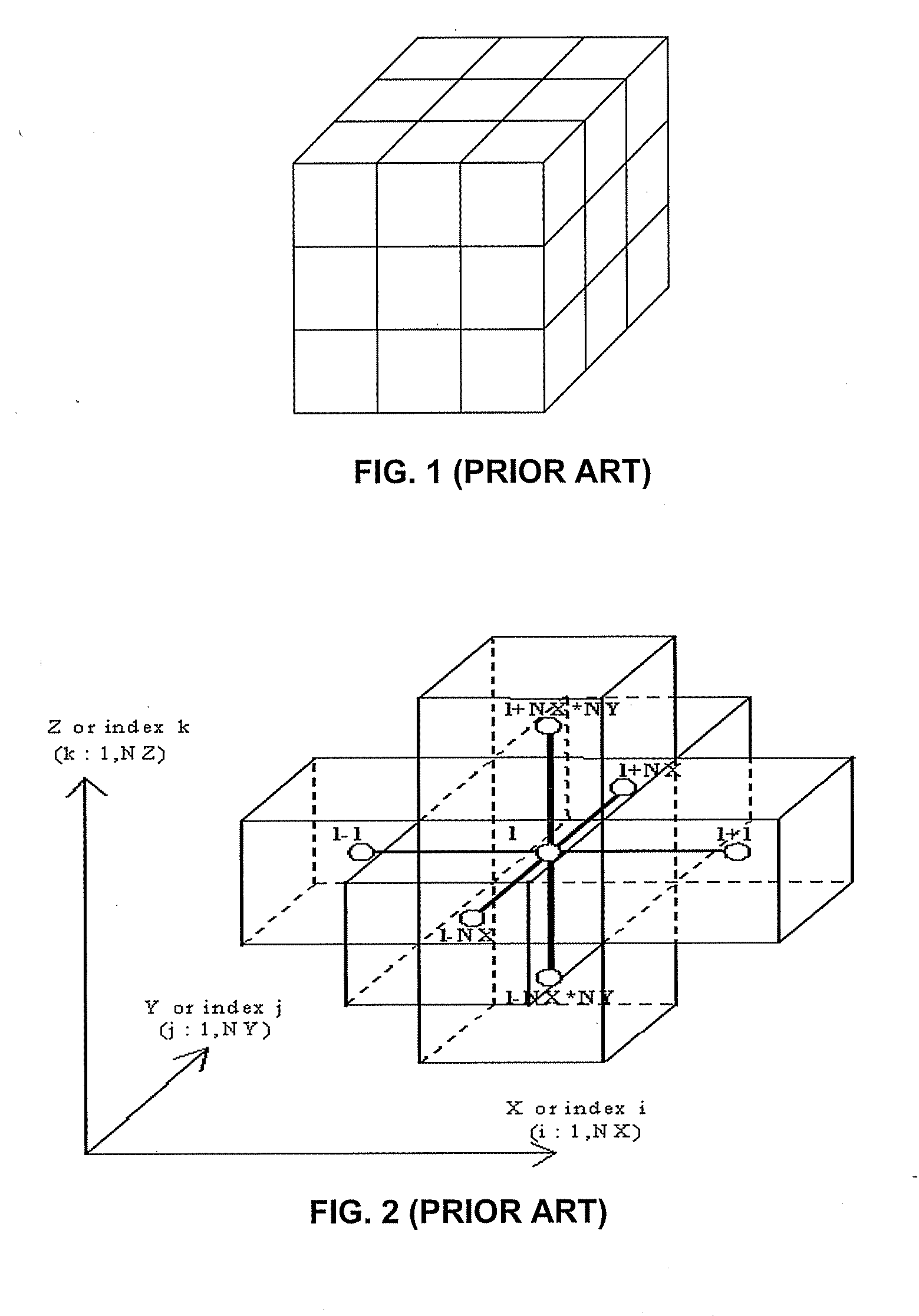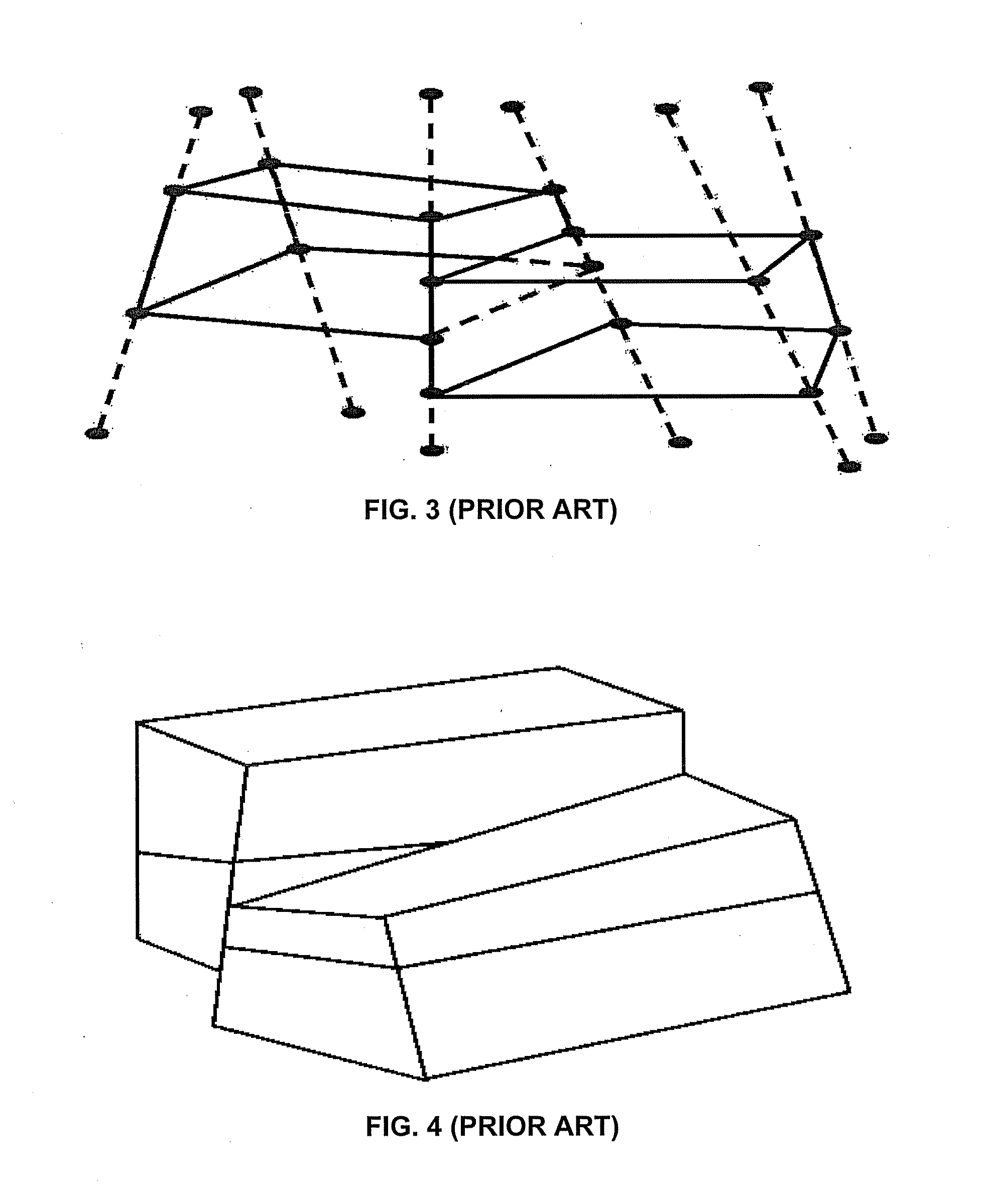Machine, Program Product, and Computer-Implemented Method to Simulate Reservoirs as 2.5D Unstructured Grids
a technology of unstructured grids and reservoirs, applied in seismology, water-logging instruments, and reradiation, etc., can solve problems such as faulting and fracturing of layers, simulation models can take days, and models cannot be neatly followed
- Summary
- Abstract
- Description
- Claims
- Application Information
AI Technical Summary
Benefits of technology
Problems solved by technology
Method used
Image
Examples
Embodiment Construction
[0042]Although the following detailed description contains many specific details for purposes of illustration, it is understood that one of ordinary skill in the art will appreciate that many examples, variations and alterations to the following details are within the scope and spirit of the invention. Accordingly, the exemplary embodiments of the invention described herein are set forth without any loss of generality to, and without imposing limitations thereon, the claimed invention.
[0043]FIGS. 8 and 9 describe a networked group of computers defining an embodiment of the machine of the instant invention. The exemplary machine consists of a pre-processing server 802 for generating and managing the reservoir grids and directing grid data into storage; a plurality of application servers 804 for receiving grid, well-production and completion data and processing reservoir simulations; file server 806 for the management and storage of simulation data, reservoir grids, geological data, w...
PUM
 Login to View More
Login to View More Abstract
Description
Claims
Application Information
 Login to View More
Login to View More - R&D
- Intellectual Property
- Life Sciences
- Materials
- Tech Scout
- Unparalleled Data Quality
- Higher Quality Content
- 60% Fewer Hallucinations
Browse by: Latest US Patents, China's latest patents, Technical Efficacy Thesaurus, Application Domain, Technology Topic, Popular Technical Reports.
© 2025 PatSnap. All rights reserved.Legal|Privacy policy|Modern Slavery Act Transparency Statement|Sitemap|About US| Contact US: help@patsnap.com



